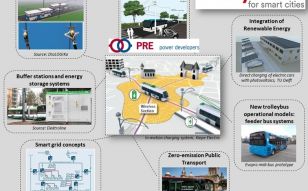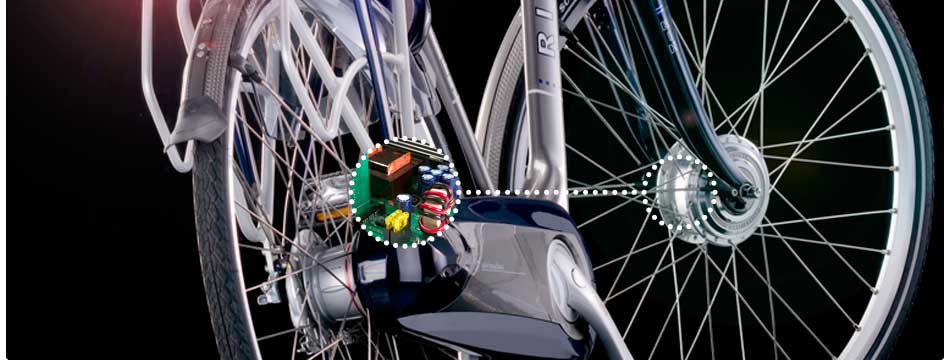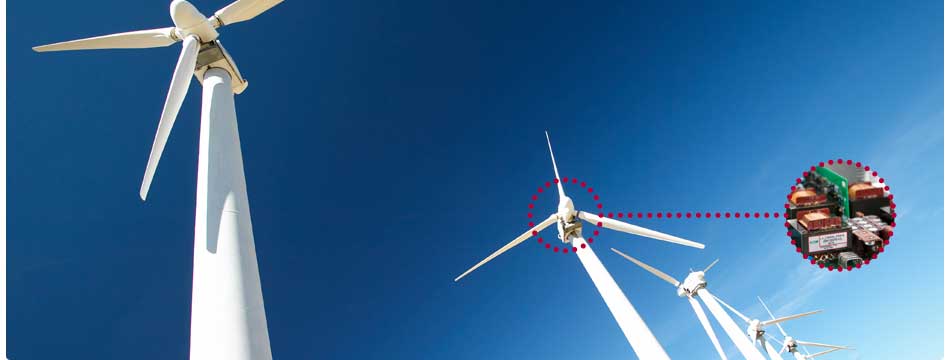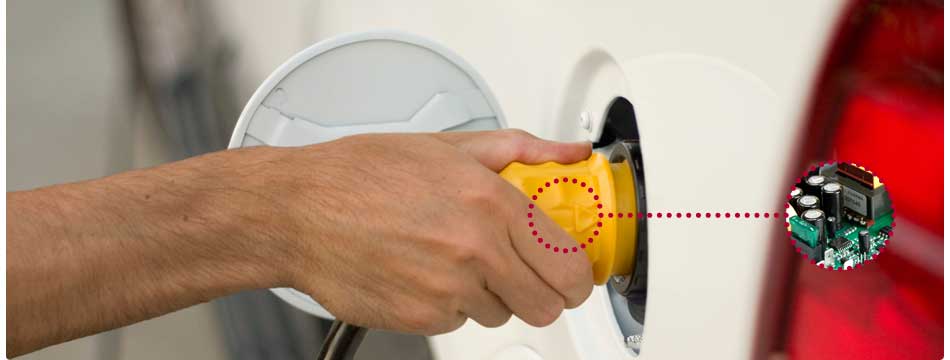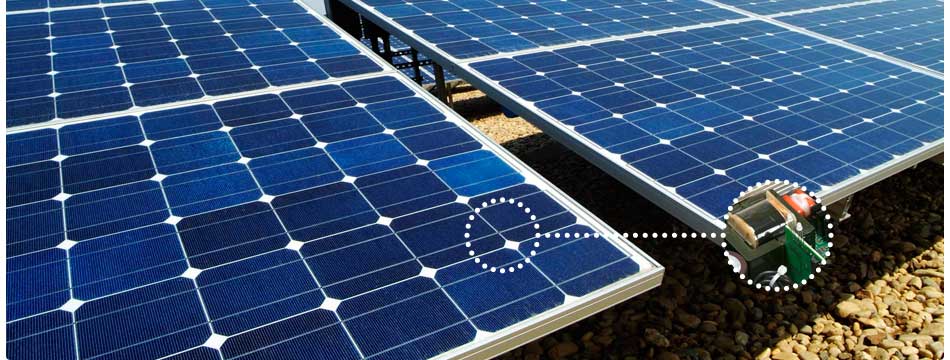
Research project Trolley 2.0: PRE develops a 700V DC charger for a smart trolley grid
Trolley 2.0 will develop and demonstrate concepts for the integration of multipurpose charging stations based on a smart trolley grid. The results of demonstrations will be compiled to tools and guidelines to support the introduction of in motion charging systems and smart trolley grid concepts in other cities.
Goals of the project:
- to prove that trolley-battery-hybrid buses are the proper technology for extensions of trolley bus networks and replacement of Dieselbus lines in remote sections,
- to demonstrate that in motion charging is a proper strategy to recharge the batteries of battery supported electric-/trolley-buses,
- to account for the ability of battery supported trolley buses to pass catenary gaps (including automated wiring of the trolley poles),
- to develop catenary sections for both tram and trolley bus,
- to develop scalable battery packs for trolley buses and other applications and demonstrate the use of 2nd-life batteries as stationary energy storage systems,
- to investigate insulation aspects of alternative trolleybus frames,
- to investigate and demonstrate the potential of trolley grids to become urban DC backbones for the charging of electric vehicles (e-midi-buses as feeder system, e-cars and e-bikes) as well as the integration of PVs,
- to develop methodologies and models for the evaluation and design of battery supported trolley buses and
- to develop best practice examples, guidelines and policy recommendations how to make trolley grids “smart”.
Project role PRE Power Developers
For this project PRE Power Developers develops a bidirectional DC charger from 700V DC. This charger will be used for laboratory testing, testing on batteries, reliability testing and pre-certification for the DC bus input voltage. Of course the charger has to be ready for catenary voltage. The charger is a crucial part of this project and the charger need to be ready for different power flows:
- Power from DC Grid from rectifier station,
- Charge and discharge the battery of the buses,
- Use smart trolley network for peak shaving,
- Integrate with PV Sytems.
Consortium as a whole
The Trolley 2.0 consortium includes nine partners from five countries (AT, DE, NL, HU and PL), including two Public Transport operators (BBG and SZKT), two industry partners (Power Research Electronics and EVOPRO / Ikarus), four research partners (Universities from Dresden, Delft, Szeged and Gdansk) and an international action group to promote e-bus systems with zero emission (trolley:motion). Further city authorities and public transport operators (e.g. Arnhem, PKT Gdynia) are involved as associated partners to enable industry and research partners to demonstrate new innovative solutions for electric public transport in their trolley networks.
trolley:motion
Barnimer Busgesellschaft
Technische Universität Dresden
University of Gdansk
University of Szeged
Delft University of Technologie
Szegedi Közlekedési Társaság
evopro Group
Power Research Electronics B.V.
Examples of Smart Trolley Network Applicatons
At the moment there are several succesfull projects with Trolley networks. PRE knows the business and helps companies with their power electronic challenges.
VenemaTech: VenemaTech has built a EV DC Fast charger which uses the trolleynetwork for power
Heliox: Building efficient and reliable charging systems for public transport
Contact
Power Research Electronics b.v.
Minervum 7073
4817 ZK Breda
The Netherlands
T +31 (0) 76 58 11 077
F +31 (0) 76 58 11 237
E info@pr-electronics.nl
